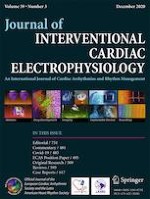Erschienen in:

11.09.2020 | Reviews
Association between fine particulate matter and atrial fibrillation in implantable cardioverter defibrillator patients: a systematic review and meta-analysis
verfasst von:
Chao Yue, Fan Yang, Luyi Wang, Fengwei Li, Yingtai Chen
Erschienen in:
Journal of Interventional Cardiac Electrophysiology
|
Ausgabe 3/2020
Einloggen, um Zugang zu erhalten
Abstract
Purpose
Atrial fibrillation (AF) is the most common sustained cardiac arrhythmia with several risk factors. Recent studies have suggested that the exposure to fine particulate matter (PM2.5) increased the incidence of AF, but there is no meta-analysis of AF occurrence due to the exposure to PM2.5 in implantable cardioverter defibrillator (ICD) patients.
Methods
We conducted a systematic review of publication using PubMed, Embase, the Cochrane library, and Web of Science to explore the association between PM2.5 and AF within ICD patients. The chosen studies were published until June 11, 2020. The I2 statistic and Q test were used to examine statistical heterogeneity across studies. Further sensitivity analyses were carried out to ascertain the reason for heterogeneity. Fixed or random-effect model was used to combine the effects. Final result was presented as the OR with 95% CI of increased incidence of AF for every 10 μg/m3 PM2.5 concentration increased.
Results
After screening our analysis contained four studies and involved 1689 AF events from 572 patients. After using the random-effect model to combine the included study result, the overall OR was 1.24 (95% CI 1.00–1.53).
Conclusion
Our meta-analysis indicated that PM2.5 exposure had an adverse effect on AF incidence in ICD patients.











